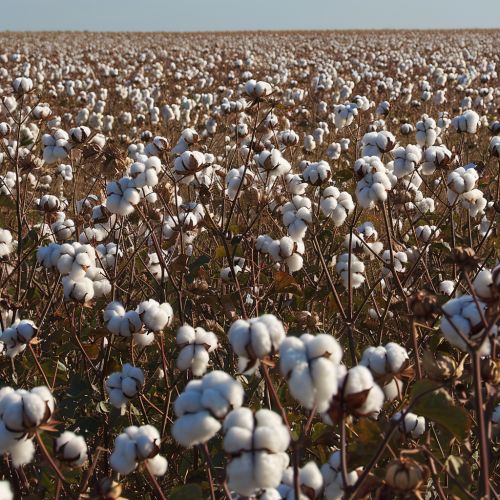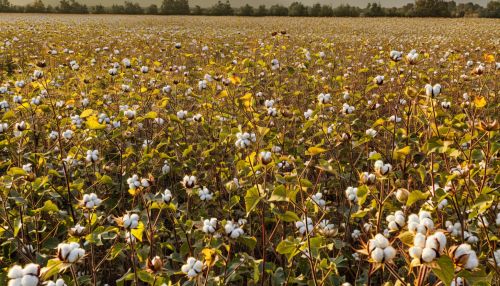Cotton
Cultivation and Harvesting
Cotton is a soft, fluffy staple fiber that grows in a boll, or protective case, around the seeds of the cotton plants of the genus Gossypium. The plant is a shrub native to tropical and subtropical regions around the world, including the Americas, Africa, Egypt and India. The fiber is most often spun into yarn or thread and used to make a soft, breathable textile, which is the most widely used natural-fiber cloth in clothing today.
The process of cultivating cotton begins with the preparation of the soil. This involves plowing, which breaks up the soil, followed by harrowing, which refines the soil and removes any weeds. The soil is then leveled and smoothed to provide a suitable surface for planting.


Cotton seeds are typically planted in the spring. The seeds are covered with soil and watered, and they usually germinate within a week. The cotton plant grows rapidly and begins to produce flowers within a few months. These flowers are pollinated by insects, and after pollination, the flower falls off and a small green pod, known as a boll, begins to grow.
The boll matures over a period of 55 to 80 days, during which time it grows larger and its color changes from green to brown. Inside the boll, the cotton fibers grow and expand, and the boll eventually bursts open, revealing the fluffy cotton fibers inside.
Harvesting of cotton is typically done by machine, although in some parts of the world it is still harvested by hand. The cotton is then cleaned to remove any dirt and seeds, and it is compressed into large bales for transport to a cotton gin.
Cotton Gin
The cotton gin is a machine that quickly and easily separates cotton fibers from their seeds, enabling much greater productivity than manual cotton separation. The fibers are then processed into various cotton goods such as linens, while any undamaged cotton is used largely for textiles like clothing.
Types of Cotton
There are four main types of cotton grown for their fibers. The most commonly grown type of cotton is Gossypium hirsutum, also known as upland cotton, which accounts for 90% of the cotton production in the United States. The other three types are Gossypium barbadense, known as Pima or Egyptian cotton, Gossypium arboreum and Gossypium herbaceum, both known as tree cotton.
Cotton in the Global Economy
Cotton is a major commodity, traded on global markets and used in products from clothing to industrial goods. The largest producers of cotton are China and India, with the United States, Pakistan, and Brazil also being major players in the global cotton market.
Environmental Impact
Cotton cultivation can have significant environmental impacts. It requires large amounts of water, and cotton is often grown in regions where water is scarce. Cotton cultivation also often involves the use of pesticides and other chemicals, which can have negative impacts on local ecosystems and human health.
